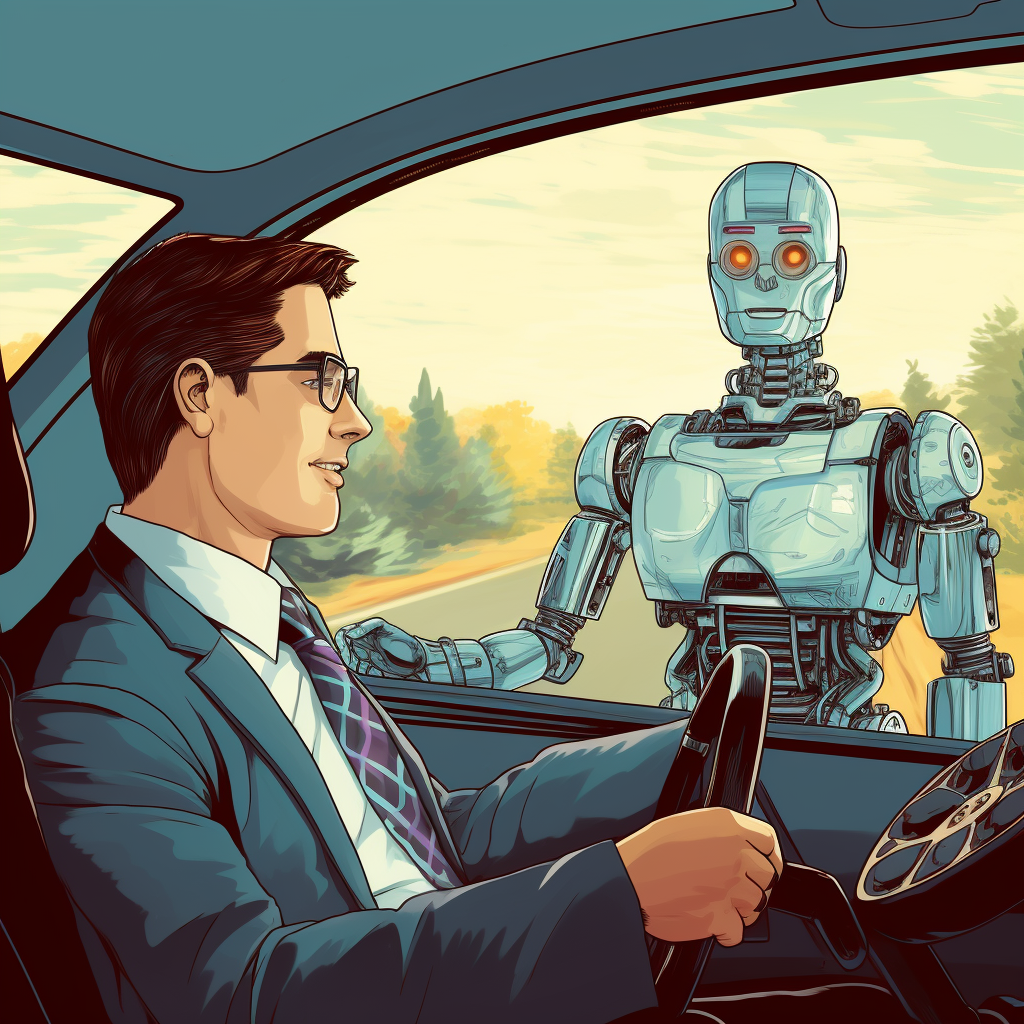Imagine a world where your commute is not bound by roads, but by the limitless expanse of the sky. This is not a scene from a science fiction movie, but a glimpse into a future shaped by autonomous flying vehicles. As we stand on the precipice of this technological revolution, let's delve into the potential, challenges, and societal implications of these sky-bound marvels.
Defining Autonomous Flying Vehicles
Autonomous flying vehicles, or unmanned aerial vehicles (UAVs), are aircraft devoid of human pilots. Controlled remotely or autonomously via sophisticated dynamic automation systems, these vehicles are the epitome of technological advancement.
If you have been following what is happening in the US Congress about what we used to call UFO and UAP, you may be thinking that UAVs follows in that category.
Technically you wouldn't be wrong but practically, we are talking about man-made flying devices. The ones that we were supposed to have all around by the cross of the year 2000 😅
The Evolutionary Journey
The concept of autonomous flying vehicles has its roots in military applications dating back to the early 20th century. However, the rapid strides in artificial intelligence, machine learning, and sensor technology have paved the way for these vehicles to evolve from simple drones to sophisticated machines capable of carrying passengers or cargo.
Revolutionizing Transportation
Autonomous flying vehicles hold the promise of revolutionizing transportation. By taking to the skies, we can alleviate issues such as traffic congestion and long commute times, making transportation faster, more efficient, and more sustainable.
Trafic kills
Traffic congestion doesn't just steal our time; it also affects our health. A study found that 81% of commuters reported being affected by traffic congestion, with some even stating that their health was negatively impacted. The stress and frustration caused by being stuck in traffic can lead to various health issues, including increased blood pressure, anxiety, and other stress-related illnesses.
Here is a summary of global traffic death statistics:
Here is a summary of global traffic death statistics:
| Year | Global Traffic Deaths |
|---|---|
| 2016 | 1.35 million |
| 2020 | 1.3 million |
For more detailed data, including country-specific statistics, you might want to check out resources like the World Health Organization[1].
These vehicles also have the potential to enhance accessibility. They could provide transportation in areas that are difficult to reach by traditional means, such as remote rural areas or regions affected by natural disasters. This could open up new opportunities for people in these areas and provide critical support in emergency situations.
Driving Economic Growth
The development and deployment of autonomous flying vehicles could spur economic growth. It could lead to the creation of new jobs in areas like manufacturing, maintenance, and air traffic control. It could also give rise to new industries and services, such as airborne delivery services or flying taxi services.
McKinsey discusses the future of advanced air mobility by 2030, focusing on the potential rise of electric aircraft as a popular mode of transportation. The experts predict that flying taxis will become a reality, offering a seamless, integrated, and cleaner commuting experience. These vehicles are expected to be smaller, more accessible, and capable of rapid transit across cities or within a 100-150 mile radius.
However, the timeline for the adoption of these technologies is still uncertain, with some experts expressing caution about the aggressive timelines proposed by some proponents of advanced air mobility. The experts also discuss the potential for autonomous flights, but they believe that public acceptance and certification issues will likely delay the implementation of fully autonomous aircraft until the next decade.

The market opportunity for flying taxis is estimated to be in the range of several billion US dollars by 2030, potentially reaching tens of billions globally in the early 2030s. This is based on the current spending on taxi services and e-hailing, which amounts to over $500 billion globally.
The experts also emphasize the importance of making advanced air mobility sustainable and inclusive, not just a luxury for the wealthy. They envision a future where advanced air mobility is as affordable as a taxi ride, democratizing access to what was once the preserve of the rich, such as private jet travel.
The Challenges Ahead for Autonomous Flying Vehicles
Safety Considerations
One of the main challenges of autonomous flying vehicles is ensuring safety. These vehicles must be able to navigate complex environments and respond to unexpected situations without human intervention. This requires advanced AI and sensor technology, as well as rigorous testing and regulation.
Sensors & AI
Artificial Intelligence (AI) is a branch of computer science that aims to create systems capable of performing tasks that would normally require human intelligence. These tasks include learning, reasoning, problem-solving, perception, and language understanding. Advanced AI systems can analyze vast amounts of data, identify patterns, make decisions, and even learn from experience, improving their performance over time.
Sensor technology plays a crucial role in collecting data about the physical world, which can then be analyzed and acted upon by AI systems. Sensors can measure a wide range of phenomena, including light, temperature, pressure, humidity, motion, and more. Advanced sensor technology can provide highly accurate, real-time data, enabling AI systems to respond quickly and appropriately to changing conditions.
However, the implementation of advanced AI and sensor technology must be accompanied by rigorous testing and regulation. Testing is essential to ensure that these technologies function correctly, safely, and effectively in a variety of situations. It can help identify and correct errors, improve performance, and ensure that the technology meets the required standards.
Regulation is also crucial in the deployment of advanced AI and sensor technology. It can help ensure that these technologies are used responsibly, ethically, and in a way that respects privacy and security. Regulation can also help prevent misuse of these technologies and mitigate potential risks and harms.
Regulatory Hurdles
Regulation is another significant challenge. Current aviation regulations are not designed for autonomous flying vehicles, and developing new regulations that ensure safety without stifling innovation is a complex task. This will require close collaboration between industry, regulators, and other stakeholders.
Gaining Public Acceptance
Public acceptance is also a critical factor. People must be comfortable with the idea of autonomous flying vehicles sharing their skies and potentially carrying them as passengers. This will require efforts to educate the public about the safety and benefits of these vehicles and to address any concerns they may have.
The Future of Autonomous Flying Vehicles
Despite these challenges, the future of autonomous flying vehicles looks promising. With ongoing advancements in technology and a growing recognition of their potential benefits, these vehicles are set to become an integral part of our transportation system.
As we soar into the future, we can look forward to a world where autonomous flying vehicles make transportation faster, more efficient, and more accessible. The sky is truly the limit.

FAQs
What are autonomous flying vehicles?
Autonomous flying vehicles, also known as unmanned aerial vehicles (UAVs) or drones, are aircraft that can fly without a human pilot on board. They can be controlled remotely or autonomously.
How could autonomous flying vehicles transform transportation?
Autonomous flying vehicles could provide a solution to issues like traffic congestion and long commute times. They could make transportation faster, more efficient, and more sustainable.
What are the potential benefits of autonomous flying vehicles?
Potential benefits include enhanced accessibility, particularly in hard-to-reach areas, and economic growth through the creation of new jobs and industries.
What are the main challenges of autonomous flying vehicles?
Key challenges include ensuring safety, developing appropriate regulations, and gaining public acceptance.
What does the future hold for autonomous flying vehicles?
The future of autonomous flying vehicles looks promising. They are set to become an integral part of our transportation system, making travel faster, more efficient, and more accessible.





